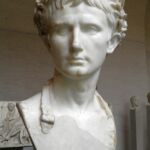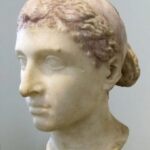In the 18th book of the Iliad, there is a description of Achilles’ shield, made for him by Hephaestus at the request of the hero’s mother – Tethys. Virgil, the entire “Aeneid” modelled on both epics of Homer (“Iliad” and “Odyssey”), did not fail to include in his work (in book VII) an analogous description of the shield Aeneas. The differences between them illustrate well the different goals and characters of the works of the two poets.
In both “Iliad” and “Aeneid”, the context of the creation of the shield is similar. It is performed by Hephaestus or the corresponding in the Roman pantheon of deities – Volcano, at the request of the hero’s mother – Aeneas – Venus, Achilles – Theethis. In the Homeric epic, Achilles, having learned of the death of Patroclus and the sacking of his armour by Hector, needs new gear to avenge the death of a dear friend, and that is why Tethys asks for it “Lame.” In Virgil’s work, on the other hand, Aeneas, upon arriving in Italy, faces a war with the Latins and Turnus, and the gift of Venus is a kind of “surprise”.
The main difference appears in the appearance of the dial, and more specifically – the scenes engraved on it. In “The Iliad” the entire field of the shield is divided into five sections – in the middle circle there are constellations known to the Greeks, in the next section there are two cities (in peace and during the war), in the third scene from agricultural life – ploughing, harvest and grape harvest, in the fourth – pastures, herds of cattle and sheep, and a dance stage; the last lane is occupied by the waters of Oceanus.
[ramka_ze_zdjejem img=”90325″ alt=”Shield of Aeneas” imgw=”500″ float=”center”]Shield of Aeneas[/ramka_ze_zdjeciem]
In “Aeneid” there are no designated places for given scenes. It covers the history of the Roman nation from the time of Aeneas up to the time of Octavian Augustus. So here’s a nursing wolf Remus and Romulus, Gauls besieging Rome, Catilina suffering in Tartarus, Cato the Elder and many other characters. Relatively much space is given to the description of Octavian’s achievements: the fight against Antony, the conquest of Egypt, a triple triumph and numerous conquered nations.
Achilles’ shield represents the world known to the Greeks of that time. This beautiful poetic description was designed, like the whole Homer epic, to proclaim some truth about the world – gods, people, history and adventures. It is not without reason that the Iliad and Odyssey were the first “textbooks”, the Bible for the Hellenes, which showed the beauty, tragedies and vicissitudes of human life on earth.
“Aeneid” had a completely different task. Created during the reign of Augustus, by Virgil associated with the ruler, it was one of the elements of propaganda. The scene of the battle of Actium is particularly telling: the Roman gods, supporting Octavian’s troops, fight against the Egyptian gods who support Antony and Cleopatra. It is a constant motif in Octavian’s propaganda, also appearing on coins, sculptures and other works of art: a foreign, Asian culture of luxury is contrasted here with “national” Roman virtue and bravery. Of course, this does not diminish the poetic artistry of Virgil, but it is worth remembering when reading the epic about Aeneas.








